1. Stakeholders
1.1. Overseer/owner/faculty
1.1.1. Image Searcher inc. Owner and operatior of TapTapSee app
1.2. Employees/Innovative leader
1.2.1. James Bailey Employee of image searcher, responder to blind users.
1.2.1.1. DISC/VAT Strong visual and descriptive scores. Will use this to provide sound argument for the successful implementation of my idea to the overseer.
1.2.2. goals: To provide a implementation of an innovative idea/project
1.3. Other employees
1.3.1. Will also be needed to fulfill the stipulations of the project
1.3.1.1. Developers: The structure is already in place, no further app developments are needed.
2. What's it all about?
2.1. Blind users receive an amount of information that could easily be improved upon to further improve their well being and independence.
2.2. What will be delivered is a more personalized and broader response to the user who seeks information through the TapTap see App
2.3. Extent
2.3.1. Thousands us users around the world utilize the app. So the focus is universal in terms of it's affected area
3. What's it all for?
3.1. Need
3.1.1. Improve upon the lives of those with disadvantaes
3.1.2. Continue to evolve and innovate technology to stay relevant
3.1.3. Yield more users due to improved product received by users
3.2. resources
3.2.1. Can more time be taken by users to type more detailed responses?
3.2.1.1. A change of company policy will be needed in order to become more subjective
3.3. Information needed to make a case:
3.3.1. Why is it company policy that we cannot be subjective for each user
3.3.2. Why can't users interact directly with each user
3.3.3. How successfully can an employee hashed plan be considered and implemented?
4. Limitations
4.1. Budget
4.1.1. No further materials will be needed
4.1.2. There is a possibility of a higher number of employees needed to type responses to the user.
4.1.3. The service already provided will be improved upon via more subjective responses.
4.1.4. The duration of each user interaction will be longer. This is due to the higher levels of information provided to the user
4.2. Most responses are normally received to the user in less than 15 seconds, at the most. In some instances, my plan will increase with time, along with a more substantive response.
4.3. Requirements
5. References:
6. Outcomes
6.1. Users of smartphone app will report higher levels of satisfaction.
6.1.1. Baseline data: Currently there is no appropriate baseline data, however a survey can be presented to users prior to the launch of the new idea to gather a baseline
6.2. Employees are able to be more subjective and identify things more specifically to users on a consistent basis.
6.2.1. Baseline data: Our quality control officer can gather data on the way images are described, and we can utilize this to compare to the way data is described after the implementation of new idea.
6.3. The abolishment of the rule that requires employees who identify images not to directly communicate with users.
6.3.1. Baseline data: Because of this rule, employees do not communicate directly with users, and our quality control officer makes sure of this. So zero images are are submitted with questions or statements to the user.
7. Organizational Forces
7.1. Is there a culture of innovation?
7.1.1. A potential barrier might be opposition from other employees and developers.
7.1.1.1. I would approach this by sending my idea to the most senior executive, to gain the support from higher up on the hierarchical ladder.
7.2. Will employees abide by it?
7.2.1. Quality control may have to be more attentive in it's work, will they be happy with this?
7.2.1.1. They have to buy into the culture of the organization, and the idea that helping people is the highest priority, even if it means a little more work. Also, gaining support from the most senior executive, can grant the idea strength and traction.
7.3. How much interaction is suitable?
7.3.1. Some users may abuse the application and request information they may not need, especially if they are not visually impaired. This could create more work and unneeded worry for employees.
7.3.1.1. I would approach this with a proposal of employee discretion. If the employee who's providing the user with information, feels as though he/she is being taken advantage of, and the information is not being used for help, but rather the user playing games, the employee has the right to end the exchange at his/her discretion.
7.4. Employee patience
7.4.1. Interacting with someone who does not see things as you do can be stressful, and in this case it's quite literal.
7.4.1.1. I would approach this with promoting a culture of empathy and patience. Quality control can also make sure that employees are exercising enough patience with user to provide them with the information they need, under normal circumstances.
7.5. Time
7.5.1. How long will it take for management to OK my project?
7.5.1.1. I would approach this by discussing what other developments are currently occurring, and where my project can fit in among the schedule.
7.5.1.1.1. Research into how my idea could potentially synergistically benefit another idea and vie versa can be done. Perhaps ideas can complement each other?
